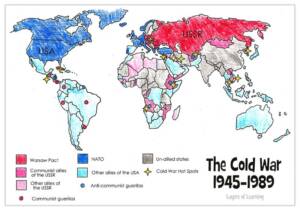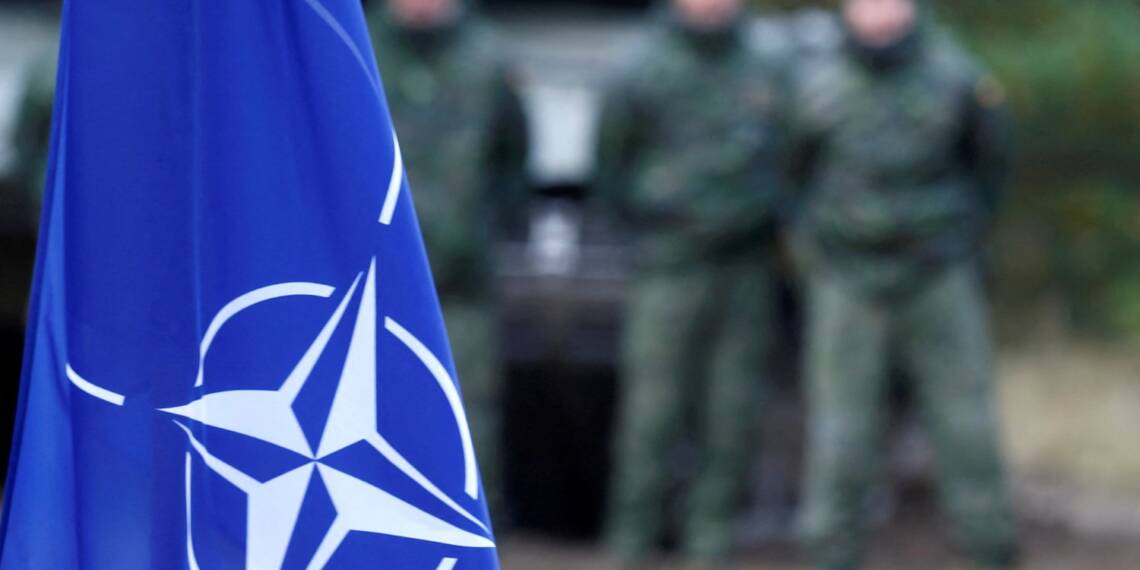NATO recently initiated its most extensive military exercise, Steadfast Defender 2024, marking a significant event since the conclusion of the Cold War. Spanning several months, the exercise involves substantial military resources, including 90,000 troops, 50 naval vessels, 1,100 ground vehicles (comprising 133 tanks and 533 armored troop carriers), and 80 aircraft of various types.
The participation of all 31 alliance members, along with Sweden in the process of joining, underscores the magnitude of this endeavor. However, the exercise’s importance extends beyond sheer numbers and duration. Two noteworthy aspects warrant examination: the overtly clear reason and a more intricate facet deserving careful consideration.
Join us on Telegram: https://t.me/tfiglobal
On the surface, Steadfast Defender 2024 is about reinforcing military cohesion within the alliance. However, a closer analysis suggests a broader objective – the subtle promotion of a pro-war narrative among Western societies.
Steadfast Defender 2024 marks a departure from NATO’s post-Cold War practices, focusing on testing regional defense plans. This shift, noted by The Economist during the Vilnius summit, enables NATO, particularly through its SACEUR office, to exert influence on European governments, compelling them to commit troops, resources, and funds.

Russian Deputy Foreign Minister Alexander Grushko rightly identifies the exercise as an “irrevocable return” to Cold War dynamics, reflecting a prolonged trend of aggressive development. Notably, the official announcement frames Russia as a “near-peer adversary.”
A nuanced aspect arises in the form of a preceding surge in propaganda, termed “cognitive warfare” in NATO lexicon. The Institute for the Study of War (ISW), a Western think tank, accuses Russia of engaging in an “information operation” to distort the ostensibly “defensive” nature of Steadfast Defender.
NATO’s recent activities, notably the “Steadfast Defender” exercise, have seen a concerted effort by representatives, spin masters, politicians, and journalists to shape a narrative. Utilizing official statements, interviews, and even speculative scenarios reminiscent of Tom Clancy novels, a narrative was woven for the Western public, particularly in the EU. The constructed storyline portrays a foreboding future wherein Moscow launches an invasion of European NATO member states. This narrative not only revives Cold War patterns but also echoes the darker undertones of its most intense phases, akin to the early 1980s, reminiscent of classic Cold War Hollywood films like “Firefox” and “Red Dawn.”
Read More: Why the US and Germany Block Ukraine’s NATO Dreams?
It is crucial to recognize the intentional nature of this propaganda campaign. NATO had the option to conduct the maneuver with less fanfare or to accompany it with a more measured message focusing on security diligence without delving into detailed statements about Russia’s potential actions. Therefore, the deliberate nature of this cognitive warfare offensive is evident. Even Jens Stoltenberg, NATO’s formal figurehead, felt compelled to temper the initial wave of panic by emphasizing that there is “no direct threat.”
Examples of the extensive propaganda efforts surrounding Steadfast Defender 2024 shed light on its remarkable scope. Notably, non-NATO member Sweden, on the cusp of joining, exhibited fervent verbal militancy. General Micael Bydén, the Swedish commander-in-chief, encouraged mental preparedness for war, while Civil Defense Minister Carl-Oskar Bohlin asserted the possibility of war reaching Sweden, potentially reflecting increased anxiety post-abandoning neutrality.
Responding to Bydén’s stance, Germany’s Defense Minister Boris Pistorius speculated about a Russian attack on a NATO country within a decade. The chairman of NATO’s military committee, Dutch Admiral Rob Bauer, echoed this sentiment in a press conference, emphasizing unprecedented integration between NATO and national defense plans. Bauer’s discourse introduced concepts like shaping armed forces for decades and fostering resilience through a “whole-of-society approach” to war preparation.
Read More: Kremlin Reacts to NATO’s ‘Military Schengen’ Proposal
While these expressions may sound grandiloquent, dismissing them would be an oversight. They signify NATO positioning itself as a dominant political force, openly claiming the entirety of society as its legitimate and enduring domain. Bauer’s authoritative remarks indicate that Steadfast Defender 2024 transcends its temporal and military dimensions, aiming to influence enduring political and social trajectories. British generals contribute to this narrative, publicly contemplating conscription and war planning against Russia.

The recent surge in NATO’s war rhetoric extends beyond addressing potential threats from Russia; it significantly focuses on the societies of European NATO member states. This discourse serves as a stark reminder that their sovereignty may be precarious, akin to Greece’s vulnerability when facing Western overlords in 2015. NATO, historically a tool for U.S. control and European subjugation, continues to project imperialistic influence in Europe.
Amid the EU’s compliance with the United States, exemplified by Admiral Bauer’s persuasive rhetoric, NATO’s assertiveness is particularly noteworthy. The organization’s unabashed display of power assumes added significance against the backdrop of Donald Trump, once a NATO adversary, now potentially resuming the U.S. presidency—an aspect that could mark NATO’s concluding chapter.
The current actions of NATO raise concerns and prompt speculation about their underlying motives. A seemingly extreme interpretation suggests a readiness for armed conflict with Russia, portraying an irrational and potentially self-destructive stance. This perspective, labeled the “Baltic Kamikaze” or “Britain is Suicidally Bored” explanation, highlights the seemingly erratic nature of NATO’s behavior, which, though alarming, is not the prevailing reality.
While there may indeed be individuals within NATO and the EU harboring war ambitions, a more probable scenario involves internal divisions and compromises. Some advocate for military engagement, while others pursue alternative objectives, such as compensating for the perceived Western setback in Ukraine. The West’s strategic error in treating Ukraine as a de facto NATO member intensifies the need to address the impending defeat in Ukraine.
Read More: Trump’s NATO jibe is a 100% correct and 200% effective
Looking at the broader perspective, an irony escapes the notice of grand strategists like Admiral Bauer. The call for a “resilience” fostered through a “whole-of-society approach” hinges on a society that is fundamentally content, where elites possess the ultimate political currency – fundamental legitimacy. This legitimacy, crucial for sustaining political entities, thrives on trust, a commodity lacking among numerous citizens in both the EU and the US.
In the shadow of Steadfast Defender 2024, NATO’s grand spectacle raises eyebrows, not only for its sheer military might but for the intricate dance of narratives it orchestrates. Beyond the ostensible goal of reinforcing military cohesion, a subtle pro-war storyline emerges, meticulously woven through cognitive warfare. The deliberate construction of a foreboding future echoes Cold War theatrics, awakening memories of an era many hoped had passed. As NATO positions itself as a political force, claiming society as its domain, questions linger about its true motives.








